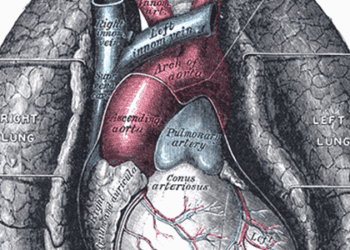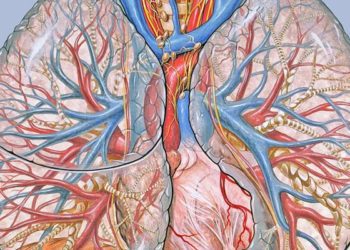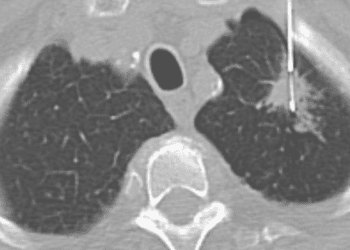Comparison of systemic corticosteroids with and without nebulized budenoside for management of severe acute asthma
1. Inhaled corticosteroid administration with systemic corticosteroid in acute asthma presentations to the emergency department was just as effective as systemic corticosteroid therapy alone.
Evidence Rating Level: 1 (Excellent)
Study Rundown: Management of severe asthma in the emergency department has traditionally included short-acting bronchodilators, adequate oxygenation, and systemic corticosteroids (SCS). However, it is well known that SCS may require up to 24 hours to exert noticeable effects on pulmonary function. Recent research has shown that inhaled corticosteroids (ICS) in asthma may cause more acute improvements in pulmonary function although this remains under investigation. As such, this randomized clinical trial aimed to investigate whether the combined use of ICS and SCS in the treatment of asthma exacerbation would be more effective than SCS alone. A total of 54 adult patients with acute asthma from Tunisia, managed in the ED were included. Participants were randomly assigned to either the experimental group which received budesonide and an SCS or the control group which received the SCS and a placebo; improvement in peak expiratory flow (PEF) and hospital admission rate was assessed in both groups. The results of this study showed that ICS with SCS administration in acute asthma exacerbations was just as effective as providing SCS only. However, considering the small sample size of this study, its power is limited and may have biased these results. Additionally, as this study was only conducted in Tunisia, these findings may not be generalizable to a wider population. Nonetheless, these findings offer insight into the use of ICS in acute asthma exacerbations and warrant further research investigating the efficacy of this treatment with a larger sample and more diverse population.
Click here to read the study in BMC Emergency Medicine
In-Depth [Randomized Clinical Trial]: The present study used data from patients aged 18 and 50 years with acute asthma presenting to the Emergency Department in Tunisia. To examine the efficacy of inhaled corticosteroids (ICS) and systemic corticosteroids (SCS) combined to SCS alone, 54 participants with acute asthma exacerbations were included. All patients received hydrocortisone hemisuccinate for SCS and oxygen at 7L/minute as a carrier gas for nebulization. The experimental group received nebulized budesonide for ICS and the control group received a placebo that was similar in appearance. Peak expiratory flow (PEF) was measured in all patients immediately prior to the treatment and then in 30-minute intervals for three hours following the initiation of treatment. Primary outcomes for this study included improvement in PEF from baseline and hospital admission rate. Secondary outcomes included clinical measures such as respiratory and heart rate, adverse effects, and proportion of patients that reached discharge threshold during the three hours of treatment. Statistical analyses included linear regression. The results of this study showed that ICS with SCS administration in acute asthma exacerbation was just as effective as treatment with SCS alone. The average PEF at three hours post-therapy was 308 for the budesonide group and 321 for the control group. There was no statistically significant difference in PEF identified between the two groups. Hospital admission rate was 35% and 33% respectively, for the budesonide and control groups; no significant difference was identified. Additionally, there was no statistically significant difference in clinical measures such as respiratory rate and dyspnea. This paper concludes that adjunctive ICS therapy with SCS in Emergency Department presentations of acute asthma exacerbations is just as effective as SCS therapy alone. However, as the power in this study was limited due to the small sample size, this likely affected its ability to identify a discernable difference between the ICS and non-ICS treatment groups. Further research investigating the use of inhaled corticosteroids in asthma exacerbation management as well as associated clinical benefits and efficacy could be very valuable in the treatment of these patients presenting to the emergency department.
Image: PD
©2022 2 Minute Medicine, Inc. All rights reserved. No works may be reproduced without expressed written consent from 2 Minute Medicine, Inc. Inquire about licensing here. No article should be construed as medical advice and is not intended as such by the authors or by 2 Minute Medicine, Inc.





![The ABCD2 score: Risk of stroke after Transient Ischemic Attack (TIA) [Classics Series]](https://www.2minutemedicine.com/wp-content/uploads/2013/05/web-cover-classics-with-logo-medicine-BW-small-jpg-75x75.jpg)
